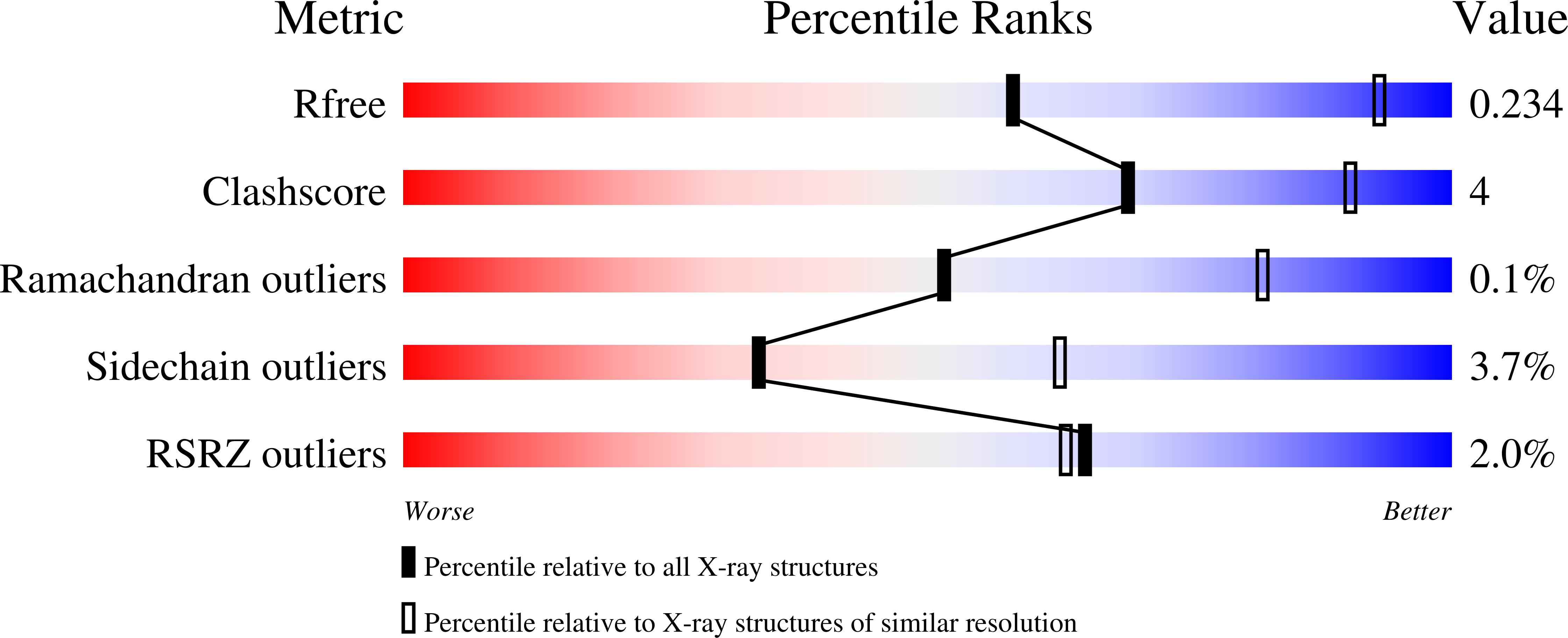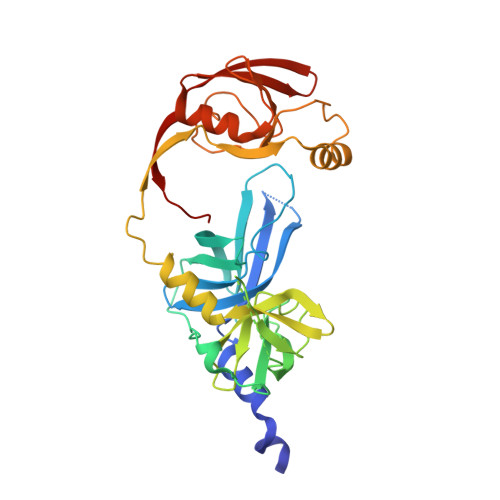Structural and Functional Analysis of Human HtrA3 Protease and Its Subdomains.
Glaza, P., Osipiuk, J., Wenta, T., Zurawa-Janicka, D., Jarzab, M., Lesner, A., Banecki, B., Skorko-Glonek, J., Joachimiak, A., Lipinska, B.(2015) PLoS One 10: e0131142-e0131142
- PubMed: 26110759
- DOI: https://doi.org/10.1371/journal.pone.0131142
- Primary Citation of Related Structures:
4RI0 - PubMed Abstract:
Human HtrA3 protease, which induces mitochondria-mediated apoptosis, can be a tumor suppressor and a potential therapeutic target in the treatment of cancer. However, there is little information about its structure and biochemical properties. HtrA3 is composed of an N-terminal domain not required for proteolytic activity, a central serine protease domain and a C-terminal PDZ domain. HtrA3S, its short natural isoform, lacks the PDZ domain which is substituted by a stretch of 7 C-terminal amino acid residues, unique for this isoform. This paper presents the crystal structure of the HtrA3 protease domain together with the PDZ domain (ΔN-HtrA3), showing that the protein forms a trimer whose protease domains are similar to those of human HtrA1 and HtrA2. The ΔN-HtrA3 PDZ domains are placed in a position intermediate between that in the flat saucer-like HtrA1 SAXS structure and the compact pyramidal HtrA2 X-ray structure. The PDZ domain interacts closely with the LB loop of the protease domain in a way not found in other human HtrAs. ΔN-HtrA3 with the PDZ removed (ΔN-HtrA3-ΔPDZ) and an N-terminally truncated HtrA3S (ΔN-HtrA3S) were fully active at a wide range of temperatures and their substrate affinity was not impaired. This indicates that the PDZ domain is dispensable for HtrA3 activity. As determined by size exclusion chromatography, ΔN-HtrA3 formed stable trimers while both ΔN-HtrA3-ΔPDZ and ΔN-HtrA3S were monomeric. This suggests that the presence of the PDZ domain, unlike in HtrA1 and HtrA2, influences HtrA3 trimer formation. The unique C-terminal sequence of ΔN-HtrA3S appeared to have little effect on activity and oligomerization. Additionally, we examined the cleavage specificity of ΔN-HtrA3. Results reported in this paper provide new insights into the structure and function of ΔN-HtrA3, which seems to have a unique combination of features among human HtrA proteases.
Organizational Affiliation:
Department of Biochemistry, Faculty of Biology, University of Gdansk, 80-308 Gdansk, Poland.















